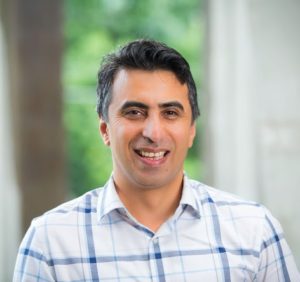Strategies to contain the spread of COVID-19 have put pressure on the
United States economy as many businesses have closed their doors and millions of Americans have filed for unemployment benefits.

Seyed M. Karimi, PhD, assistant professor, Department of Health Management and System Sciences, University of Louisville School of Public Health and Information Sciences, and health economist with the Louisville Metro Department of Health and Wellness, says “the economic downturn can create a vicious cycle and lead to further economic and health weaknesses, therefore it is imperative to focus on containing the disease to break the cycle.”
A recession, declared when the price-adjusted gross domestic product (GDP) declines for at least two consecutive quarters, is inevitable, he explains.
Karimi says financial institutions’ prediction of the drop in the GDP in the second quarter of 2020 ranges from 10 – 50 percent.
“All the numbers, even the lowest, are unprecedented in recent history,” he said.
How quickly an economic turnaround can happen is unclear.
“If businesses open and start hiring, then economic strength will feed itself,” Karimi said. “Federal economic stimuli such as expansionary fiscal policy (increasing government spending and tax cuts) and monetary policy (decreasing the interest rate) can help to reduce the burden and economic recovery.”
Greatest economic burden felt by low-income workers
Karimi says it is the low-income workers who disproportionately feel the direct economic and health impacts of the COVID-19.
According to the U.S. Private Sector Job Quality Index, the highest concentration of low-wage workers is in the foods and beverage services, clothing and retail, support and communication services and automotive services sectors.
“These jobs cannot be done remotely. The total number of at-risk low-wage jobs is 35.2 million, significantly greater than the total number of at-risk high-wage jobs, which is 1.9 million. In addition, low-wage jobs usually do not offer paid sick days,” he said.
Low-income adults also are more likely to be uninsured and have underlying health conditions.
“Health status is negatively correlated with income; the lower the income, the worse the physical and mental health status,” Karimi said.
He explains how the correlation is much stronger at older ages. For example, about 45 percent of the poor and near-poor, but only about 7 percent of the high-income
45 − 64-year-old Americans reported poor or fair physical health status in 2014.
“The higher rates of uninsured and poor/fair health among the low-income imply they are more vulnerable to COVID-19,” he said.
Read an entire Q&A with Karimi on the School of Public Health & Information Sciences website.



























